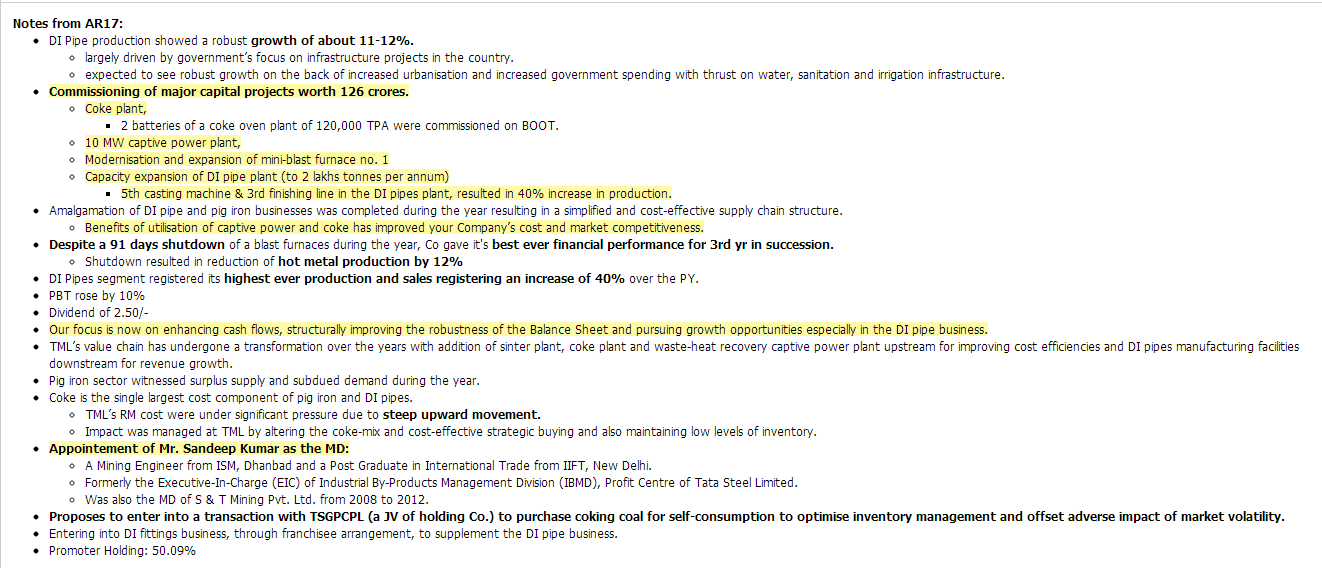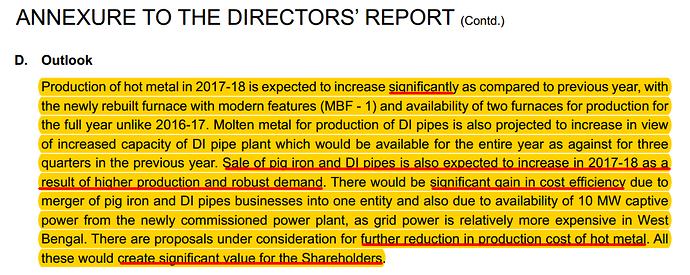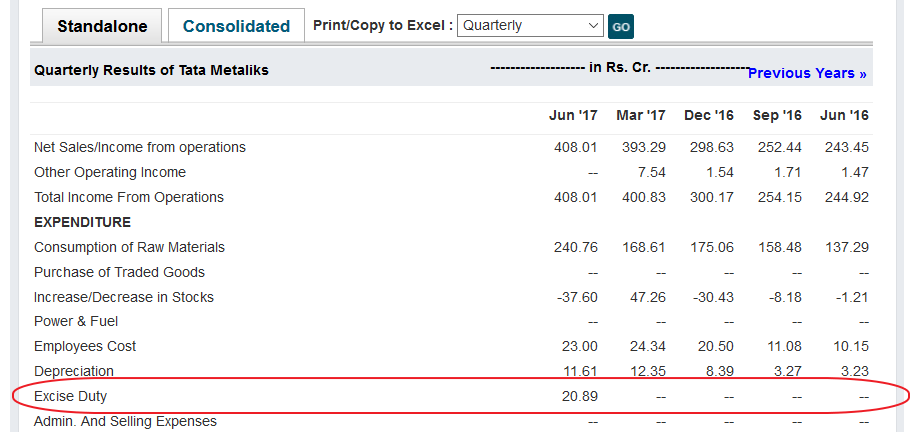Tata Metaliks (TML), a subsidiary of Tata Steel, is one of the leading manufacturers of Pig Iron and Ductile Iron Pipes.
Tata Metaliks has a capacity of 4 lakh tons of Pig Iron and nearly 2 lakh tons capacity for DI Pipes.
Since last 3 years, the process of merging Tata Metaliks with Tata Steel was going on; however, on 17 May16, it was finally decided by the board of both companies to cancel the merger of Tata Metaliks into Tata Steel. This led to a meteorological rise in the stock price of Tata Metaliks from Rs. 130 to current levels of Rs. 355
Investment arguments
From pure Pig Iron to DI Pipe Player: Prior to FY10, TML was primarily involved in manufacturing of Pig Iron. Since FY11, as a part of forward integration, TML started using its own Pig Iron to manufacture DI Pipe. It has been able to consistently increase its share from DI Pipes from 2% to 49% in FY16.
Strong Industry Trends in DI Pipes: The DI Pipes industry is witnessing a strong growth of 10-15% annually over last 5 years. The domestic market for DI Pipes increased by 18% YoY in FY16 to 13 lakh tons.
DI Pipe Capacity to double in FY17 (this year): TML has a DI Pipe capacity of 1.1 lakh tons; however, considering a strong demand, TML was able to run its plant at 120% capacity utilisation producing nearly 1.33 lakhs tons of DI Pipes in FY16. TML has undergone a capex that will double its capacity in DI Pipes from 1.1 lakh tons to 2.0 lakh tons in FY17.
Margins Improvement through Increasing Efficiency and Better Product Mix: TML’s consolidated operating margins have consistently increased from -2% (negative) in FY12 to 14% in FY16.
Improving Balance Sheet supported by solid Cash Flows: : TML had done a large expansion between 2007 and 2009 for setting up the DI pipe plant. However, before it reached proper utilisation levels, the mining ban in India led to severe strain on availability of raw materials which led to a huge loss of Rs. 113 crores in FY12. TML had to close its Redi, Maharashtra plant and was impacted further due to the one-time VRS scheme offered to its employees in Redi plant. In FY12, TMLs debt stood at Rs. 581 crores having a debt to equity of 7 times. TML has brought down this debt from 581 crores to 351 crores in FY16 with the help of massive improvement in working capital and cash generated from sale of Redi plant. Currently the debt equity ratio has fallen from 7 times to 1.8 times. A point to note is that this reduction of leverage is after TML has spent nearly Rs 250 crore on the capital expenditure projects to improve efficiencies and production capacities that will show its results from FY17. Now that a majority of capital expenditure is completed, TML should see large debt reduction over the next 2 years and move towards a debt free balance sheet.
Valuation: At current market price of Rs.355 trading at market capital of Rs.895 crs having a net profit of Rs.123 crores in FY16 with very strong operating cash flows of around 150 crores. This indicates that Tata Metaliks is available at a price to earnings ratio of only 7.3 times.
Looks like a buy at the current levels




